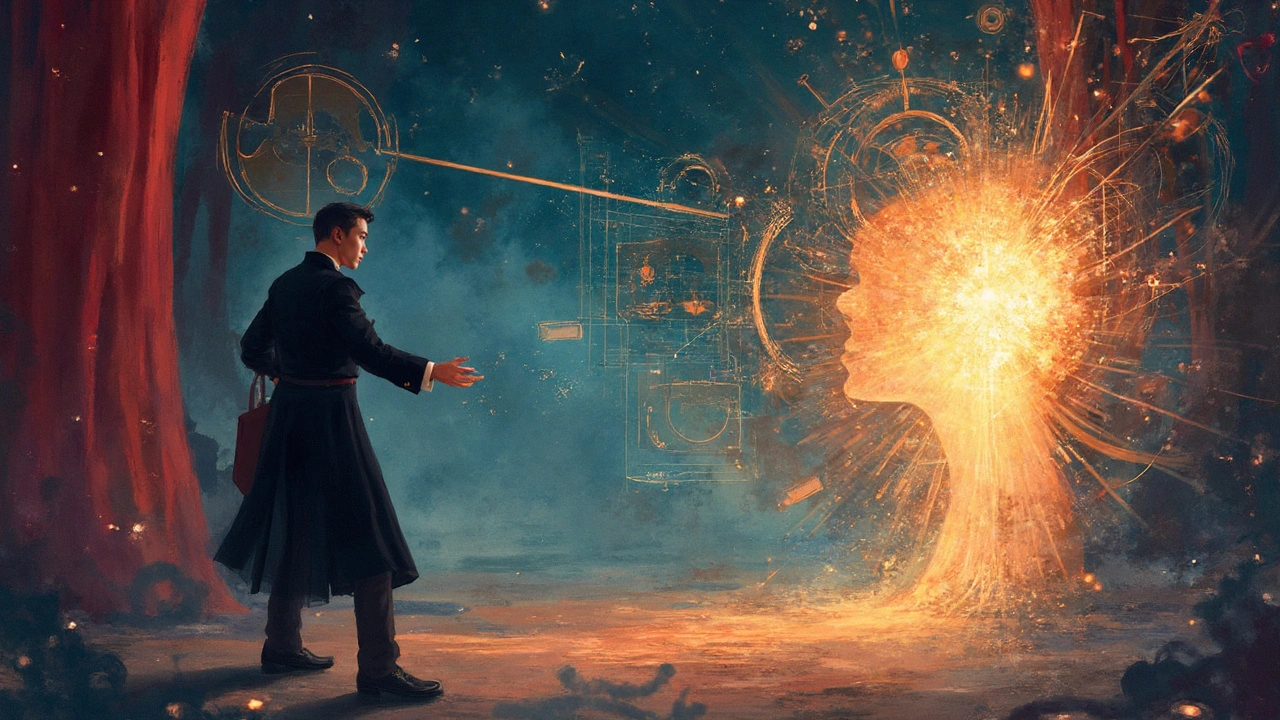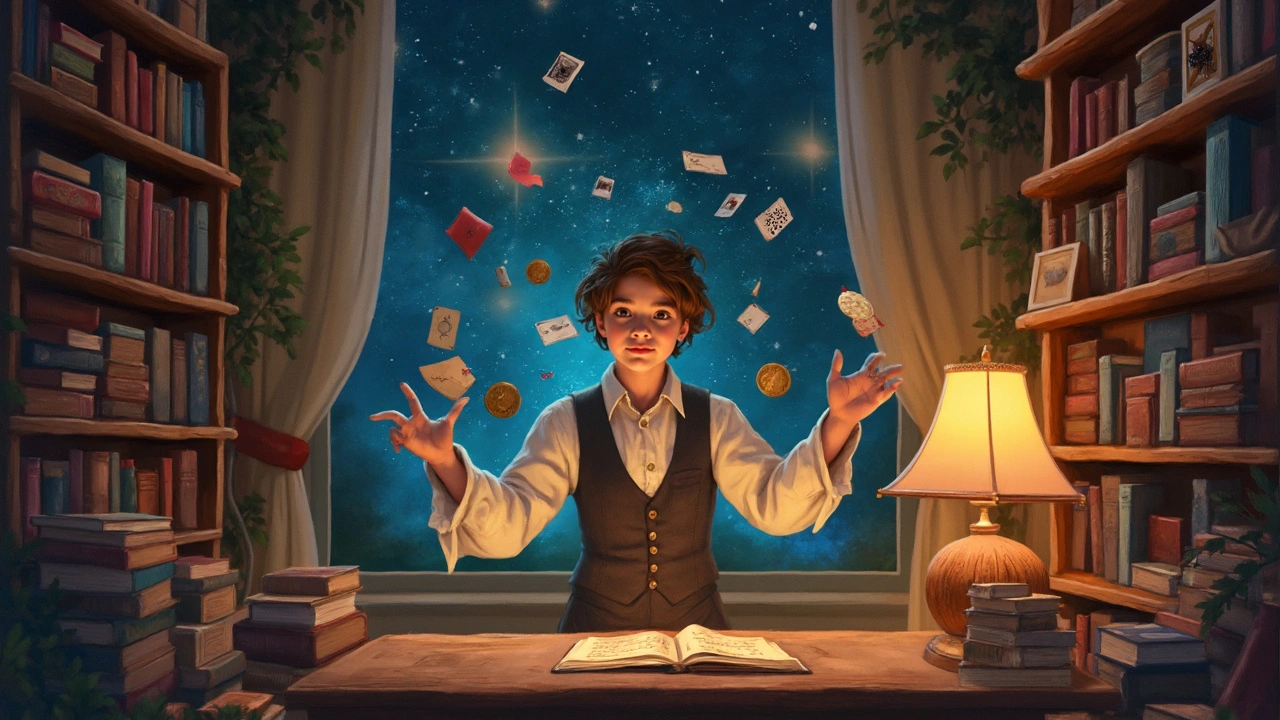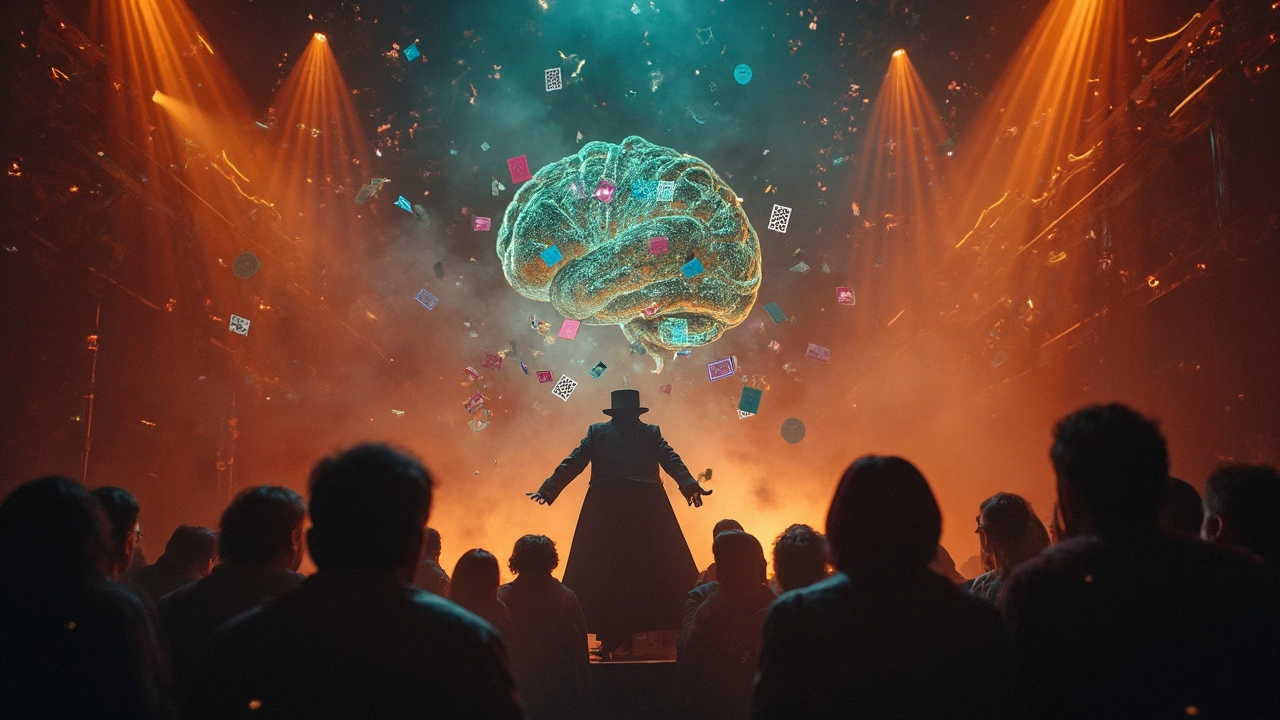Ever wondered why magic tricks leave us in awe? It's not just about wands and top hats; there's a fascinating science behind it. Let's dive into how magicians pull off their illusions and what makes our brains fall for them.
First up, let's talk psychology. Magicians are master psychologists, using our cognitive biases and expectations against us. They often rely on a principle known as 'change blindness'—where rapid movements or distractions make us miss obvious changes. It's like how you might think a card just vanished when, in reality, it was cleverly swapped out while you weren't looking.
Then there's the neuroscience of attention to consider. Our brains can't focus on everything at once, so they prioritize certain stimuli. Magic tricks exploit this by directing our attention to one thing while something else happens out of sight. Ever notice how a magician might snap their fingers or make a big gesture? It's all about keeping you fixated on a distraction.
- The Psychology of Illusions
- Neuroscience of Attention
- Art of Misdirection
- Illusion Mechanics
- Tips for Aspiring Magicians
The Psychology of Illusions
Magic tricks are a playground of psychological trickery. At the heart of these tricks is understanding how we humans perceive and interpret the world. Magicians turn this understanding to their advantage, subtly bending our mental processes to create magic tricks that mess with our minds. Let's break down some of the key psychological principles that magicians exploit.
Change Blindness
This is a big one. Change blindness is our inability to notice changes in a visual scene. Ever been in a room where someone quietly switched the light switch, but you didn't notice until someone pointed it out? That's change blindness for you, and magicians love it. They change one card for another right under our noses, but we're too caught up in the show to see it happen.
Selective Attention
This theory says that we can't pay attention to everything around us equally. Our brains filter out 'unnecessary' details and focus on what seems important at the moment—like a magician's big, flashy gesture. As we're gawking at the spectacle, the real magic happens on the periphery, completely escaping our notice.
"Magic taps into the basic processes of cognitive science," says Dr. Susana Martinez-Conde, a neuroscientist who studies illusions. "It reveals gaps in our attention and perception."
Expectation and Surprise
Our brains are wired to predict what will happen next based on experience. When those predictions don't match reality—voilà!—we're surprised. Magicians manipulate our expectations with patter, props, and clever setup. When something unexpected happens, even if it's out of sight, we experience the moment as pure magic.
The Role of Suggestion
Some magicians are masters of suggestion, subtly planting thoughts in our minds. Through words or subtle cues, magicians can lead us to expect certain outcomes. It's a bit like the power of suggestion in hypnosis without the hypnotic trance.
Understanding the psychology behind magic helps us appreciate the art even more. But it also teaches us about our own minds—how easily they're tricked and how marvelously they're wired. Now, doesn't that make you look at magic shows with a whole new level of respect?
Neuroscience of Attention
The way our brains handle attention is like a carefully orchestrated concert. When you're watching a magic trick, magicians expertly use this natural limitation to their advantage. Our brains are hardwired to focus on one thing at a time; we can't help it. This selective focus is what's called the 'attentional spotlight.' It's like a flashlight, illuminating only what's in front of you, leaving everything else in the dark.
Magicians are pros at using this spotlight. They might capture your gaze with bright lights or loud noises, ensuring your attention is where they want it to be. Meanwhile, the real trick happens outside this spotlight. A study from the University of Illinois found that around 50% of people fail to notice something unexpected when focused on a specific task, a phenomenon known as 'inattentional blindness.'
Focus and Distraction
Ever hear that card tricks rely more on the audience than on the cards? That's because strong tricks are built on a foundation of distraction. While you're busy watching the magician's right hand, it's the left hand doing the real magic, using sleight of hand techniques. This isn't just a magician's whim; it's grounded in solid science. Neuroscience tells us that multitasking isn't really efficient. When brains switch focus, we lose track of details and miss changes.
The Role of Surprise
Magicians don't just distract; they surprise. Ever notice how a surprising moment in a trick makes it more memorable? That’s because surprise can actually deepen focus momentarily, but primarily it jumbles everything else. Think of it as a reset button for your brain, creating a brief window where your attention is fully open. This is why magicians use unexpected revelations – to momentarily confuse the brain and steer your focus to specific actions.
So, next time you watch a magician perform, remember it's not just magic. It's science! The art of attention management is at the heart of every illusion, turning the 'ordinary' into something magical. By mastering it, magicians can direct what you see, making the impossible seem entirely possible.

Art of Misdirection
Misdirection is the secret weapon of every magician. It's how they guide your attention to exactly where they want, pulling off the illusion techniques without you seeing a thing. This isn't just about waving hands around; it's a precise science.
Understanding Misdirection
At its core, misdirection is about controlling what you focus on. Imagine a magician showing you a card, talking about it while doing something sneaky with the other hand. Your brain's engaged in the story, and that's misdirection in action!
There's an interesting fact: humans are naturally limited in their attention span. The 'Spotlight Model' of attention suggests that we focus on one area at a time. Magicians exploit this by keeping your eyes on one thing while performing their trick elsewhere. This controlled redirection is why it's so effective.
Techniques of Misdirection
1. Visual Cues
Magicians often use big, bold movements that capture your attention. These movements align perfectly with the task at hand, but not where the real action happens. They might use color contrast or movement, nudging your natural instinct to look there.
2. Verbal Distraction
Words can direct your thoughts and focus too. By narrating a story or creating dialogue, magicians distract your cognitive processes. This mental engagement keeps your eyes where they want.
3. Social Cues
Another trick is to engage with spectators directly. Asking questions or seeking interaction puts focus on the social element, giving misdirection a boost. It humanizes the performance, making people less skeptical.
4. High-Level Misdirection
Some magicians use sound as a tool. A sudden noise or music can make you look up or shift your eyes, serving as a concealed distraction method.
Parting Tips for Misdirection
- Practice Your Focus Tricks - Don't just learn the hand movements; master distraction tactics to lead the audience effectively.
- Start Simple - Experiment with small tricks, like card tricks, where your hands are the stars.
- Study the Audience - Observe what makes them tick and tailor your methods to that.
Remember, a good magician is part performer, part psychologist. With misdirection, you're not just doing a trick; you're controlling an experience.
Illusion Mechanics
Ever watched a magician pull a rabbit out of a hat or cut a person in half and wondered how on earth they did it? Welcome to the world of illusion mechanics, where sleight of hand and cunning design tricks the mind into seeing the impossible.
The Power of Sleight of Hand
One of the oldest tricks in the book is sleight of hand. Magicians use exceptionally quick and precise movements to manipulate objects without the audience noticing. The 'French Drop,' for example, is a classic coin vanishing technique. You'd swear the coin just disappears into thin air, but it's actually palm-hidden in the magician's hand.
Hidden Compartments and Props
Much of the magic also lies in the clever construction of props. Secret compartments in hats for bunny rabbits or trick tables that allow a person to contort in ways that defy logic—these are all part of the illusion mechanics toolkit. The saw-a-person-in-half trick often uses two assistants curled up in ways only a contortionist could manage, concealed by the box and the cutter's careful maneuvering.
Forced Perspective
This clever technique plays with how we perceive size and distance. Imagine someone making an elephant disappear on stage. What you might not realize is that a backdrop moves gently forward while the lighting dims, creating an illusion where the elephant appears to vanish when it's really just out of sight or behind a curtain.
The Role of Technology
Today’s magicians are also integrating new tech into their acts. Augmented reality can make coins float in mid-air, while hidden projections can make ghosts appear on stage. It’s all about making you question what’s real and what’s not.
| Common Illusions | Mechanics Used |
|---|---|
| Vanishing Coin | Sleight of Hand |
| Sawing a Person | Hidden Compartments |
| Levitation | Invisible Supports |
Next time you see a mind-bending trick, remember there’s a mix of psychology, skill, and illusion techniques at play. Whether you're an aspiring performer or just curious about the how-to, understanding these mechanics will make the magic even more mesmerizing.

Tips for Aspiring Magicians
So, you've got an interest in magic, and you're ready to start amazing audiences with your own tricks. It's more than just knowing a few cool card tricks; it requires dedication and an understanding of both the art and science behind magic tricks.
Start with the Basics
Before you try to saw a person in half, get comfortable with the fundamentals. Learn simple card tricks, coin vanishes, and basic sleight of hand. These not only build confidence but also form the foundation of more complex illusions. Plus, simple tricks are great conversation starters!
Practice, Practice, Practice
Practice is what turns a fumbling attempt into a flawless performance. Spend hours in front of a mirror or record yourself to catch little mistakes you might not notice otherwise. Remember, each time you perform a trick, you refine your skills and timing.
Understanding Your Audience
Great magicians know that every audience is different. Pay attention to their reactions—what makes them gasp, laugh, or lean in closer? Tailor your performance to enhance their engagement and keep the surprise elements hidden till the perfect moment.
The Power of Misdirection
One of the biggest tools in a magician's kit is misdirection. Use body language, eye contact, and storytelling to direct your audience's attention away from your moves. This is a classic way to make illusion techniques even more impactful.
Learn from the Best
Watch seasoned magicians perform their acts, but don't just enjoy the show—analyze it. What techniques are they using? How do they engage with the audience? Attend workshops or magic clubs where you can meet others who share your interest and learn from their experiences.
Resources to Get You Started
- Join magic forums and online communities to connect with other aspiring magicians.
- Purchase instructional books like Mark Wilson's Complete Course in Magic or engage with video tutorials from professionals.
- Consider attending a local magic class or workshop for hands-on learning.
Remember, magic is as much about storytelling and engaging with your audience as it is about illusion techniques. No trick will have the desired impact unless you can captivate your audience with charisma and showmanship.
Embrace Your Unique Style
While it's great to learn from the best, make sure to carve out your own style. Find your own magical persona and develop tricks that resonate with your character. This personal touch can help differentiate you from other magicians, making your performances more memorable.

